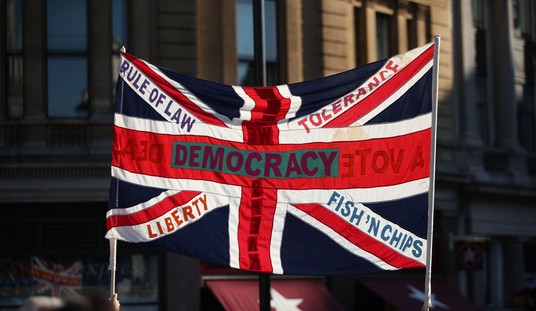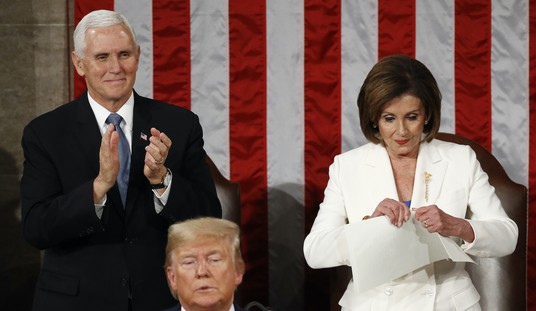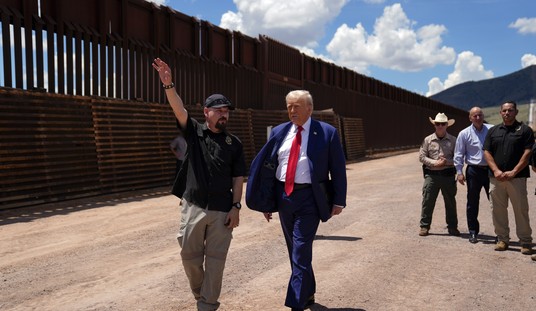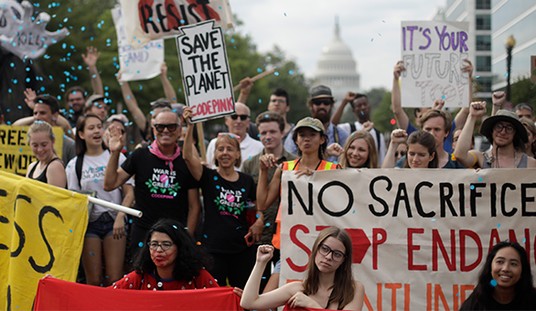How important was last night’s Romney-Obama debate, which nearly everyone agrees was a lopsided win for Romney? Time will tell. But one thing we can know for sure is that it was, by far, the most-watched event of the 2012 campaign.
The importance of debates is itself endlessly debated, and you can’t really tell the role of the debates in a race except with hindsight. We can watch the polls, but of course there will also be other factors at work on those – more debates, ads, external events. Certainly the conventional wisdom that Romney won had the immediate impacts of (1) breaking the media narrative that everything was going against Romney and (2) giving Republicans something to cheer for and cause for optimism, and that alone is worth something in a business where perceptions can become realities. (One of the most consequential debates was the Ford-Carter debate in 1976 that featured Ford’s Poland gaffe; veterans of the Ford campaign believe to this day that the gaffe broke momentum that might have carried a surging Ford to victory in a close race).
But unlike perceptions, the size of the TV audience is a hard fact. More than 58 million people watched last night’s 90-minute debate on the broadcast TV networks and cable news networks, a number that “does not include coverage on PBS, Univision, C-SPAN, the cable business networks or online.” (UPDATED: the final number is actually 67.2 million). That compares to the 130 million people who voted in the 2008 election (120 million in 2004) – an audience roughly half the size of the electorate. That’s way, way more people for more time than any TV ad can reach. And it’s much, much larger than the audience for the conventions: Obama’s convention speech drew 35.7 million viewers, compared to 30.3 million for Romney’s speech, 26.2 million for Michelle Obama, 25.1 million for Bill Clinton, and 21.9 million for Paul Ryan.
The first 2008 debate between Obama and McCain was watched by 52.4 million people, but that debate was on a Friday night; the second debate drew an audience of 63.2 million. The most-watched debate in 2008 was actually the vice presidential debate, owing to the ratings draw of Sarah Palin, 69.9 million viewers, the largest audience since 70 million people watched one of the Clinton-Bush-Perot debates in 1992. While the Kennedy-Nixon debate remains the most-watched by audience share, the single largest debate audience remains the sole Reagan-Carter debate in 1980, which drew 80.6 million viewers. That debate had an enormous impact, if you believe the polls showing that Reagan was all but tied going into the debate and won the race by 8 points; the debate was the only one that year, it was a week before Election Day, and the 80 million viewers compares to 85 million people who voted in that election, meaning that the overwhelming majority of the voters had seen the debate.
A good showing in the debates is important to Romney because October is typically the month when the race tightens, and depending how you read the polls (a whole separate story), this race is already pretty tight by historical standards. Jay Cost looked at this yesterday, using the Gallup polls going back to 1968. (Gallup’s may not be the most accurate polls, but they are rarely way off base and usually good for spotting trends, plus they have the advantage of a much longer historical track record to compare than any other pollster’s). Even with growing polarization and early voting, he noted that exit polls showed anywhere from 22-31% of voters in the last 4 elections made up their minds after October 1, more than enough to swing a competitive race.
If you look at the numbers Cost cites comparing the latest Gallup poll at the start of October to the final result, of the 9 races he examines (7 of which featured an incumbent on the ballot, and two a sitting vice president; his chart excludes 1988 and 2008, neither of which involved an incumbent but one of which involved a sitting VP*), Cost found October swings for the incumbent party (which was trailing in the polls in each case) in 1968, 1976 & 1992, an average swing of 11.7 points. He found October swings against the incumbent party (which was leading in the polls in each case except being tied in 1980) in 1972, 1980, 1984, 1996, 2000, and 2004, an average swing of 8.7 points, and of course two of those (Carter in 1980 and Gore in 2000) lost the election. The five incumbents since 1972 who led or tied in the start-of-October Gallup poll went from an average lead of 17.5 points to an average margin of victory of 8.3 points, dropping 9 points in the polls. Obama has led by 4-6 points in the Gallup polls the first few days of October (it’s four points as of today). If he suffers something on the order of the 9-point average loss that hit other incumbents who led entering October, he loses. This is why it’s whistling past the graveyard for spinning Democrats today to note the bad initial debate showings by Reagan in 1984 and George W. Bush in 2004 – Bush had an 11-point lead and won the election by 2 points, while Reagan had a 26 point lead and even his final landslide victory was a good deal smaller than that. Obama’s margin for error is much, much smaller.
The only incumbents who gained ground in October were George H.W. Bush in 1992 and Ford in 1976 – they made up average of 10 points by Election Day but still lost – and in both cases the voters had already given the somewhat nationally unknown Democratic challenger a big lead (Ford had been more than 30 points back at one point), and were getting a certain amount of buyer’s remorse. But absent that, voters traditionally don’t get more enthused about an incumbent in the last month of the race.
* – Those two races, unlike the other nine, featured a leader with a modest lead who pulled away down the stretch. Bush led Dukakis by 5, 47-42, but ended up winning by 7, 53-46; Obama led McCain by 3 with registered voters, 48-42, but also ended up winning by 7, 53-46.
There are still two more debates to go, plus the vice presidential debate. We don’t know yet how they will play out, but we know that a lot more people watched the first one than anything else that’s happened in this race. Given the historical trends, it’s foolish in the extreme for the Obama camp to take lightly the possibility that a lot of voters can still turn against him before Election Day.














Join the conversation as a VIP Member